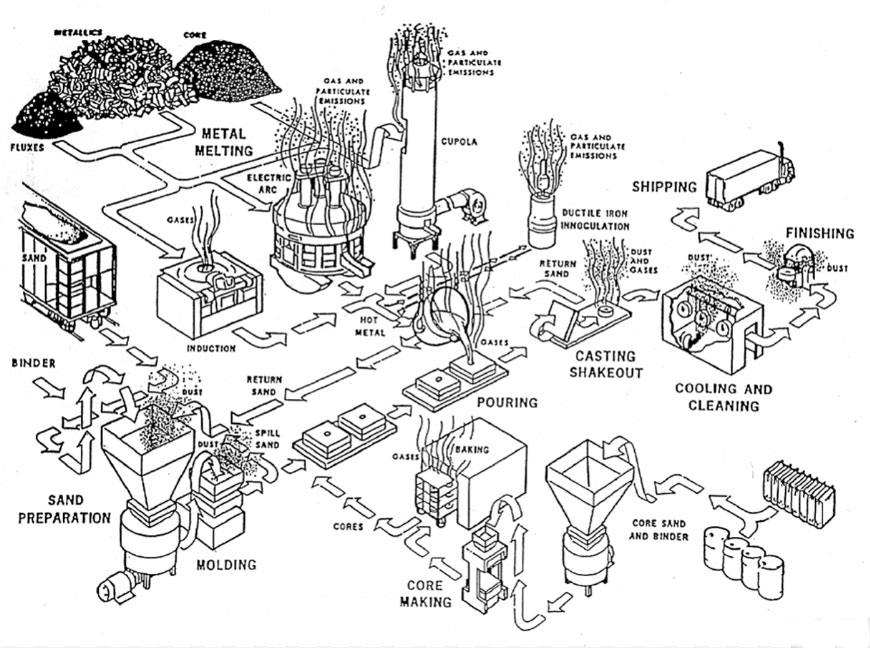
Sand casting is a highly versatile manufacturing process that unleashes the design potential for crafting complex shapes in various parts and components. Its adaptability to intricate geometries and the ability to produce custom molds make it an excellent choice for creating complex shapes that would be challenging or costly to achieve through other methods. Here’s how sand casting enables the crafting of complex shapes:
1. Mold Flexibility:
- Sand casting uses sand molds, which can be easily shaped to match the intricate contours and complex geometries of the desired part.
- The mold cavity can be intricately designed to create parts with undercuts, varying wall thicknesses, and internal cavities.
2. Low Tooling Costs:
- Compared to other casting methods, sand casting has relatively low tooling costs. This makes it feasible to produce custom molds for one-off or small batch production of complex parts.
3. Design Freedom:
- Sand casting allows for design freedom with minimal restrictions. Complex shapes and unique features can be cast directly without the need for additional post-casting operations.
4. Large and Small Scale Production:
- Sand casting can produce complex shapes in both small and large scales, making it suitable for various applications across different industries.
5. Multi-Component Integration:
- Complex sand molds can be designed to incorporate multiple components or features into a single casting, reducing the need for assembly and improving part integrity.
6. Material Versatility:
- Sand casting accommodates a wide range of materials, including metals and some non-metallic materials, providing engineers with material flexibility to match the application requirements.
7. Prototype Development:
- Sand casting is an effective method for creating prototypes of complex parts. Engineers can evaluate design concepts and make necessary adjustments before committing to expensive production tooling.
8. Cost-Effective for Short Runs:
- For low-volume production of complex parts, sand casting offers a cost-effective solution compared to more expensive processes like investment casting or die casting.
9. Minimal Waste:
- Sand casting generates minimal waste because excess sand can be reclaimed and reused in subsequent molds, reducing material costs and environmental impact.
10. Dimensional Accuracy:
- With proper tooling and process control, sand casting can achieve excellent dimensional accuracy, ensuring that complex shapes are reproduced with precision.
Sand casting enables engineers and designers to unleash their creativity and achieve complex shapes that meet the specific requirements of their applications. Whether it’s for industrial machinery, automotive components, aerospace parts, or artistic sculptures, sand casting provides the design potential and flexibility to turn complex ideas into reality, offering a cost-effective and efficient manufacturing solution for a wide range of industries.
